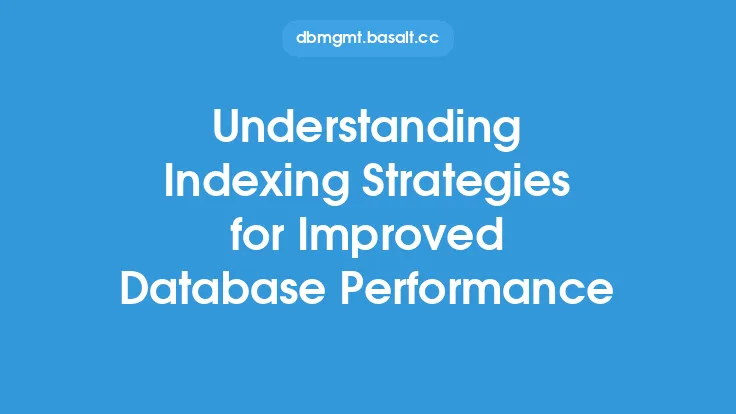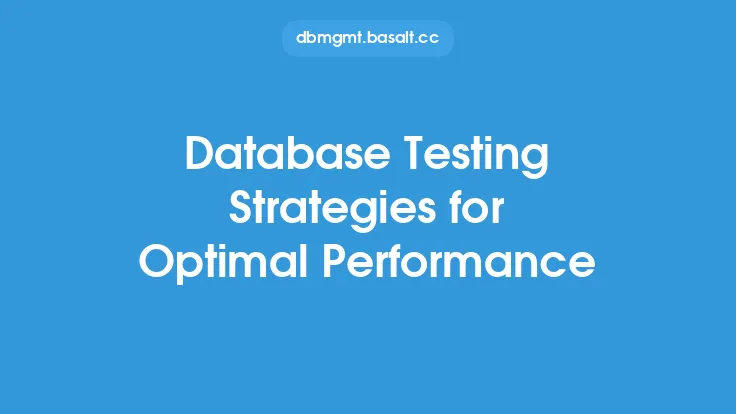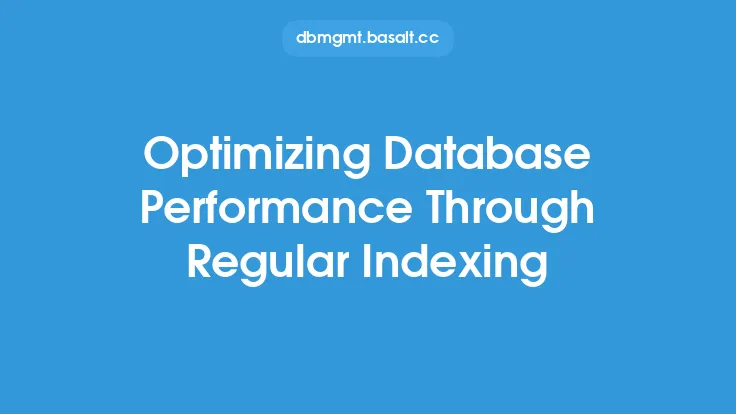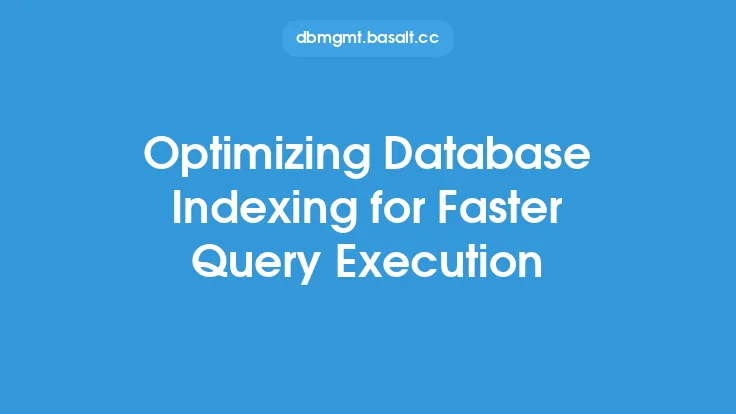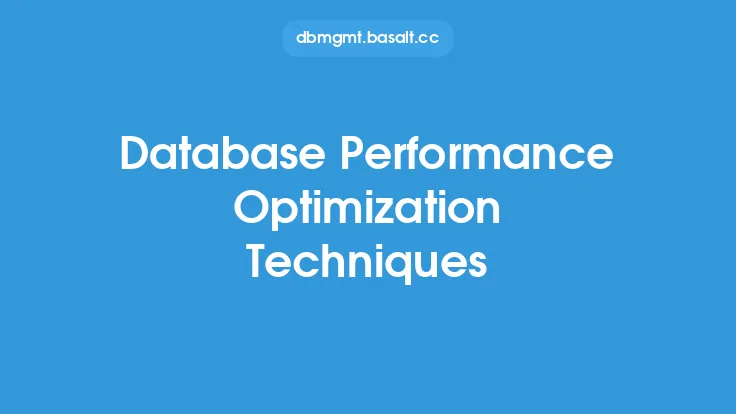When it comes to optimizing database performance, indexing is a crucial aspect that can significantly impact the efficiency and speed of data retrieval. Indexing strategies are designed to reduce the time it takes for the database to locate and retrieve specific data, thereby improving overall system performance. In this article, we will delve into the world of indexing strategies, exploring the different types of indexes, how they work, and the best practices for implementing them in your database.
Introduction to Indexing
Indexing is a data structure technique used to improve the speed of data retrieval operations by providing a quick way to locate specific data. An index is a data structure that contains a copy of selected columns from a table, along with a pointer to the location of the corresponding rows in the table. Indexes can be created on one or more columns of a table, and they can be used to speed up various database operations, such as SELECT, INSERT, UPDATE, and DELETE.
Types of Indexes
There are several types of indexes that can be used in a database, each with its own strengths and weaknesses. Some of the most common types of indexes include:
- B-Tree Indexes: B-tree indexes are the most common type of index and are used to index large amounts of data. They are self-balancing, meaning that the height of the tree remains relatively constant even after insertions and deletions.
- Hash Indexes: Hash indexes are used to index data that has a unique value for each row. They are faster than B-tree indexes for equality searches, but slower for range searches.
- Full-Text Indexes: Full-text indexes are used to index large amounts of text data, such as documents or articles. They allow for efficient searching of text data using keywords or phrases.
- Composite Indexes: Composite indexes are used to index multiple columns of a table. They can be used to speed up queries that filter on multiple columns.
How Indexes Work
Indexes work by providing a quick way to locate specific data in a table. When a query is executed, the database checks the index to see if it can use it to speed up the query. If the index is useful, the database will use it to locate the required data. Here's a step-by-step explanation of how indexes work:
- Index Creation: An index is created on one or more columns of a table.
- Index Population: The index is populated with data from the table.
- Query Execution: A query is executed that filters on the columns that are indexed.
- Index Scan: The database scans the index to locate the required data.
- Row Retrieval: The database retrieves the required rows from the table using the pointers in the index.
Best Practices for Implementing Indexes
Implementing indexes can be a complex task, and there are several best practices that should be followed to ensure that indexes are used effectively. Some of the best practices for implementing indexes include:
- Index Columns Used in WHERE Clauses: Indexes should be created on columns that are used in WHERE clauses, as this can speed up queries that filter on these columns.
- Index Columns Used in JOIN Clauses: Indexes should be created on columns that are used in JOIN clauses, as this can speed up queries that join tables on these columns.
- Avoid Over-Indexing: Too many indexes can slow down write operations, such as INSERT, UPDATE, and DELETE. Indexes should be created only on columns that are frequently used in queries.
- Monitor Index Usage: Index usage should be monitored regularly to ensure that indexes are being used effectively. Unused indexes should be dropped to improve write performance.
Index Maintenance
Indexes require regular maintenance to ensure that they remain effective. Some of the tasks that should be performed regularly include:
- Index Rebuilding: Indexes should be rebuilt regularly to ensure that they remain balanced and efficient.
- Index Reorganization: Indexes should be reorganized regularly to ensure that they remain compact and efficient.
- Statistics Updating: Statistics should be updated regularly to ensure that the database has accurate information about the distribution of data in the index.
Common Indexing Mistakes
There are several common indexing mistakes that can negatively impact database performance. Some of the most common indexing mistakes include:
- Over-Indexing: Creating too many indexes can slow down write operations and waste disk space.
- Under-Indexing: Failing to create indexes on columns that are frequently used in queries can slow down query performance.
- Incorrect Index Type: Using the wrong type of index can slow down query performance. For example, using a B-tree index for a column that has a unique value for each row can be slower than using a hash index.
Conclusion
Indexing is a powerful technique for improving database performance, but it requires careful planning and maintenance to ensure that it is used effectively. By understanding the different types of indexes, how they work, and the best practices for implementing them, database administrators can create efficient and effective indexing strategies that improve query performance and reduce the load on the database. Regular index maintenance is also crucial to ensure that indexes remain effective and efficient over time. By following the best practices outlined in this article, database administrators can create a well-indexed database that provides fast and efficient data retrieval.
